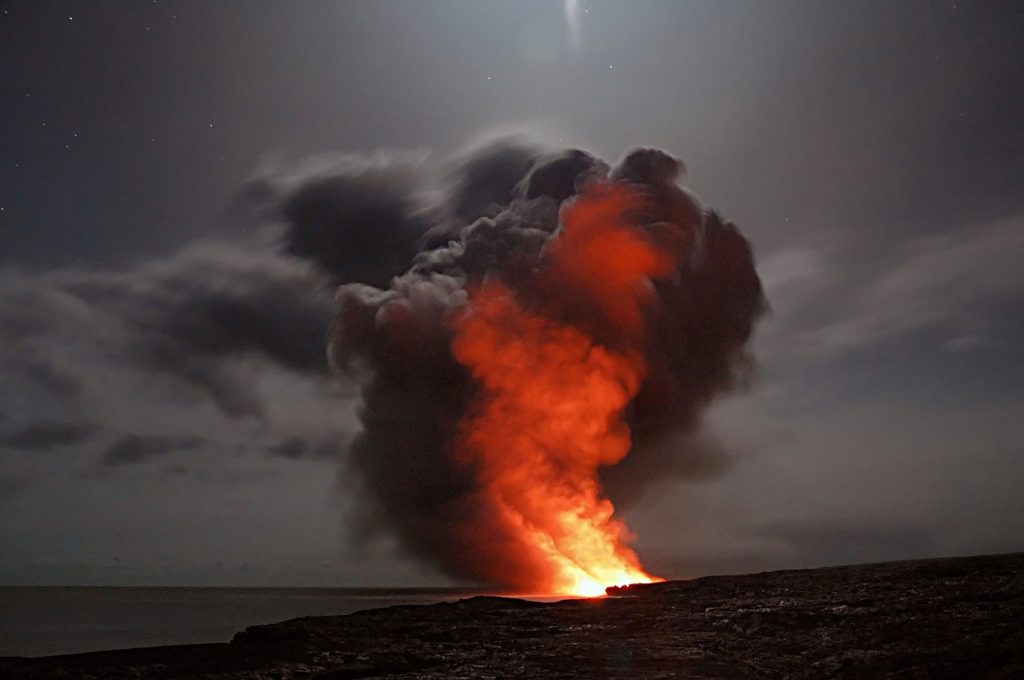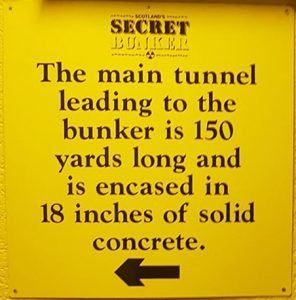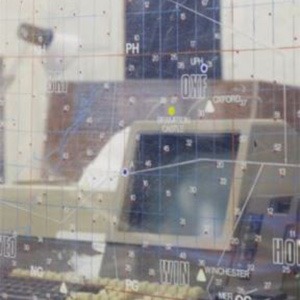The Bunker’s Secret Blog Join us here on a regular basis to find out about life and events at the...
Read MoreThe
Bunker's Secret Blog
Join us here on a regular basis to find out about life and events
at the Bunker and you might even stumble across some hidden secrets!
MORE POSTS…
MELTDOWN: SURVIVING A NUCLEAR ATTACK
The Secret Bunker was constructed almost 100 feet below ground level. It has three tonne blast-proof doors, and is encased in ten feet of protective concrete.
>Not only is this a great way of protecting those within from the harsh winter weather conditions in Scotland, it is also equipped with everything needed to sustain up to 300 personnel in the event of nuclear attack.

 Although the Cold War is over, nuclear weapons are still very much a real and present threat. So, if there was to be a nuclear attack today, what would be the chances of survival, and how might one protect against the initial blast, and subsequent fallout?
Although the Cold War is over, nuclear weapons are still very much a real and present threat. So, if there was to be a nuclear attack today, what would be the chances of survival, and how might one protect against the initial blast, and subsequent fallout?
Take shelter!
While human instinct is to flee attack, the best chances of survival are in waiting out any nuclear incidents below ground. Unless you are fortunate enough to live in Switzerland or Finland, it’s unlikely your domicile will be fitted with an atomic shelter as standard. Seek out a basement, local shelter or any building with reinforced concrete walls and roof. Or, if you have some money to play with, consider investing in a survival shelter, for around $40,000. These home-from-homes are essentially giant, metal canisters sunken into the ground, and come equipped with ventilation, working bathrooms, and even solar power. Disclaimer: masterminding a nuclear shelter is not always compatible with interior design or taste, and practicality will always trump taste in the survival stakesBasic rations
Most of the equipment you need to survive in the immediate aftermath of a nuclear attack is probably available in your local supermarket. While this might seem to put supermarket employees at a distinct advantage as far as survival is concerned, the flimsy corrugate construction of your common-or-garden retail park purveyor does level the playing field somewhat. When shopping for the apocalypse, forget delicious perishables like bacon and eggs; when you’re on basic rations, that tin of rice pudding really will seem like ambrosia. Dry goods like rice, pasta, oats, beans and noodles are the perfect basis for post-nuclear nourishment, with dried fruit & veg, honey, sugar and powdered milk as little luxuries (though not all at once). All this will mean very little if you have no water available to you, so be sure to stash enough for one gallon per day, per family member.Other supplies
Unless you want to go cabin crazy, you’ll need to find a way of keeping in touch with what remains of civilisation. A hand-cranked radio might just be the ticket. While there are probably apps for nuclear survival, keep an old mobile phone and charger in your bunker: the battery life lasts longer, and your score on Angry Birds will no longer seem so important when you’re fighting over the last kidney bean.20th Anniversary for Secret Bunker
The Bunker’s Secret Blog Join us here on a regular basis to find out about life and eventsat the Bunker...
Read MoreMy God! What Have We Done?
The Bunker’s Secret Blog Join us here on a regular basis to find out about life and eventsat the Bunker...
Read MoreLaunch! Launch!
The Bunker’s Secret Blog Join us here on a regular basis to find out about life and eventsat the Bunker...
Read More





